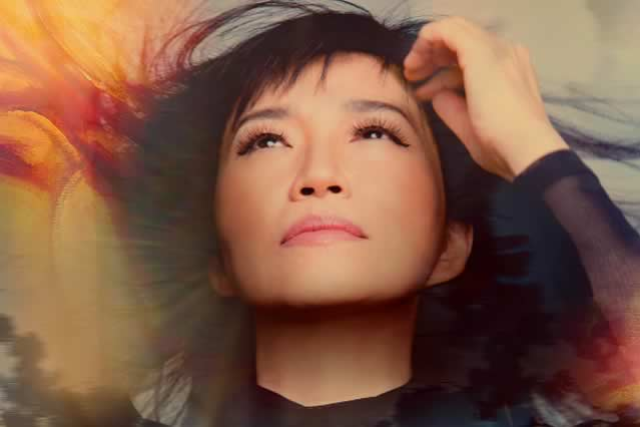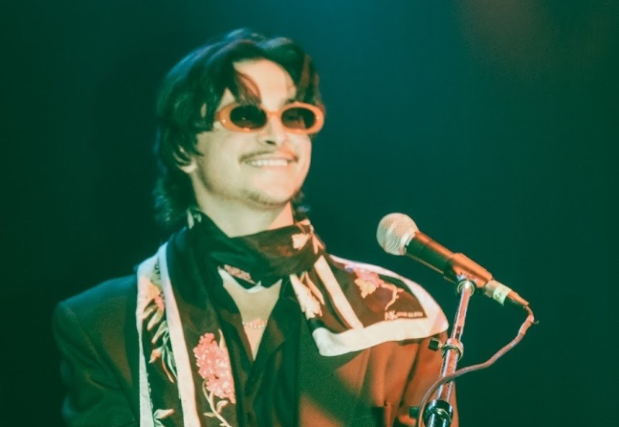
Keiko Matsui

“My melodies are my living testimony,” declares internationally acclaimed pianist, composer and humanitarian Keiko Matsui. A world citizen, Matsui’s music speaks to the hearts and souls of fans around the world, transcending borders and building bridges among people who share a common appreciation of honest artistry and cultural exchange. “Music creates a oneness,” says the striking, petite powerhouse who has worked alongside everyone from Miles Davis and Stevie Wonder to Hugh Masekela and Bob James. A consummate artist, Keiko views each show and recording as a unique opportunity. “Journey To The Heart is my gift to my fans. I want to deliver the most beautiful and emotional experience.” Keiko, who has lent her voice to raise awareness for such causes as The Daniel Pearl and the Susan G. Korman Foundations says, “I feel the world is getting crazier and we need to collectively go back and recall what connects us all…our spirits, hearts and our souls.” On Journey To the Heart, Matsui more than delivers what she has come to be loved for breathtakingly beautiful transcendent melodies that transport the listener. A master storyteller, Keiko Matsui crafts passionate and emotive songs with lush harmonies and global rhythms to create timeless musical anthems. “Every song is like its own drama,” confides Keiko. “The word ‘heart’ in the title has a double meaning. I want the music to find its way into your heart but I also mean heart, as is the creator and center of the universe. I hope the listeners will allow themselves to go anywhere with my music.”
Upon the completion of Keiko Matsui’s 2016 winter tour, the pianist, who divides her time between the West Coast and Japan, set her sights and energies on her next recording project. “I finally had a chance to slow down, so I went to Catalina Island to be free. I love the ocean. Just to be able to hear the waves and watch the sunset is healing to me. Catalina Island is where most of the melodies on Journey To The Heart were born.” The project evolved over a four month period starting in Catalina and then taking the pianist on an Eastern European tour and eventually back to California to record at Unity Studio in Hollywood. “After I completed the last album Live in Tokyo, I felt that a new chapter in my life had started. I really wanted to work in a more organic way,” explains Keiko. Journey To The Heart Keiko Matsui’s 27th recording as a leader, marks the 30th Anniversary since her recording debut and is her boldest statement yet. Helping Keiko to reinvigorate her sound and new acoustic direction are Cuban musicians: bassist Carlitos Del Puerto and drummer Jimmy Branly. Del Puerto, son of famed bassist Carlos Del Puerto, one of the founding members of Irakere, has collaborated with everyone from Bruce Springsteen and Quincy Jones to Stevie Wonder. Conservatory trained Branly has worked with such notables as Flora Purim, Celia Cruz, Sheila E., Natalie Cole and Airto Moreia. “Carlitos and Jimmy are amazing musicians. I admire their artistry, musicianship and spirituality. They are my new family on the road and they bring such a sensitivity and passion to every situation,” shares Keiko. Peruvian guitarist Ramon Stagnero and Venezuelan percussionist Luis Quintero also join Keiko along with special guest harmonica player Gregoire Maret and a sublime string section that augments several of the album’s tracks. Stagnero has worked with such diverse artists as Al Jarreau, Andrea Bocelli, Dianne Reeves and Herb Alpert, while Quintero has been first call for such musicians as Louie Vega, Natalie Cole, Gonzalo Rubalcaba and George Benson. Maret hails from Switzerland and has worked and toured with Herbie Hancock and Pat Metheny among others.
True to Keiko’s personality, her music is eloquent, earthy and multi-dimensional. Her unique melting pots of musical influences are at the forefront as is her unique ability to craft mystical and otherworldly melodies that permeate your very essence. “Melodies are an important part of my music and the melodies on Journey To The Heart seemed to come from another dimension,” shares Keiko. “There is a different energy. I was even amazed myself at just how bright and happy the music is. It does reflect where I am right now.”
Matsui conceived over 100 different melodies and motifs for Journey To The Heart and eventually settled on the ten themes featured on the CD. During the initial stages of writing she collected melodies and wrote charts and began recording on her iPhone and a small recorder everywhere she went. Journey To The Heart opens with the exhilarating, percussive and jubilant “Moving On.” It is fitting as the song parallels a fresh new beginning for Keiko and it is actually the first song she wrote for the album. Keiko admits that at first she felt the melody was too simplistic. “I tried to write another song but kept coming back to this one. When the band and engineer told me they could not get the melody out of their heads, I knew this was the one.” Keiko’s bluesy riffs and Stagnero’s soul laced guitar juxtaposed to the driving undercurrent Branly and Quintero, create a euphoric journey from beginning to end. The fluid and telepathic interplay of the ensemble is front and center on the samba-esqe “Carnival” and it is hard to resist the impressionistic introduction to “The Edge of Twilight,” which is guaranteed to stop you in your tracks. Joined by a string section, Matsui creates a high point on Journey To The Heart with the unforgettable “Butterfly.” As Keiko’s fingers glissando over the piano keys it is not hard to picture the wingspan of a spectacularly colored butterfly taking flight. “When I was writing, I noticed the sound being made from my pencil on the paper and at the same time I was sniffling. The sun was setting as I sat at my piano working and the melody for “Butterfly” came to me. It was such a special moment, that I was in tears.”
Keiko transports us to North Africa with the stunning and melodramatic “Casablanca,” featuring harmonica player Gregoire Maret. The album’s title track opens with the suspension of violins that converge with Keiko’swistful melodies. As the song climaxes, Stagnero’s country tinged guitar and Keiko’s dancing lines sweep you away until Keiko’s haunting solo piano brings the proceedings to a surprising and peaceful halt. We continue to globetrot and land in the Republic of Cuba with “Havana Nights,” which grew out of Keiko’s recent collaborations with Carlitos Del Puerto and drummer Jimmy Branly. “We have been talking about going to Cuba and I thought it was the right time to write this song.” The celebratory “New Beginning” is fitting for where Keiko finds herself at the present moment. “Each step of the way in making this new music, I felt like I was evolving. I feel like I have given so much, that I have found a new side of myself. In many ways I am really making a new beginning.” Gregoire Maret joins Keiko once again for the mysterious and contemplative “Two Harbors.” “I wrote this song in the Catalina’s where I learned that there are two harbors,” explains Keiko. “There are two destinations you can choose. Just like in life you have the freedom to choose your path and to decide your own destination.” Journey To The Heart closes with the minuet and multi-movement cycle “Blue Rose.” “This piece is a bit of a different genre for me. It is more like story-telling music. I tried a different approach using the piano and strings,” shares Keiko, “Blue Rose” transports the listener on a soul quest and ends Journey To The Heart on an unforgettable high note.
“When I see little babies who come back as teenagers to my shows or their parents who take their entire families to my concerts I feel blessed. We are trading good energy and the memories are timeless. We are recalling what is most important as human beings on this one planet. I hope that by delivering this peaceful and meaningful music, that we can together increase kindness and caring. I hope we can make a better place to live for the next generations. ”
Keiko Matsui took her first piano lesson at five and she made her US recording debut in 1987 with the recording A Drop of Water. Under Northern Lights followed in 1989 and her subsequent albums of note include No Borders (1990), Night Waltz (1991), Cherry Blossom (1992), Doll (1994), Sapphire (1995) and Dream Walk (1996), which remained on the Billboard Contemporary Jazz Chart for over 15 months and further cemented her reputation as a force to be reckoned with.
